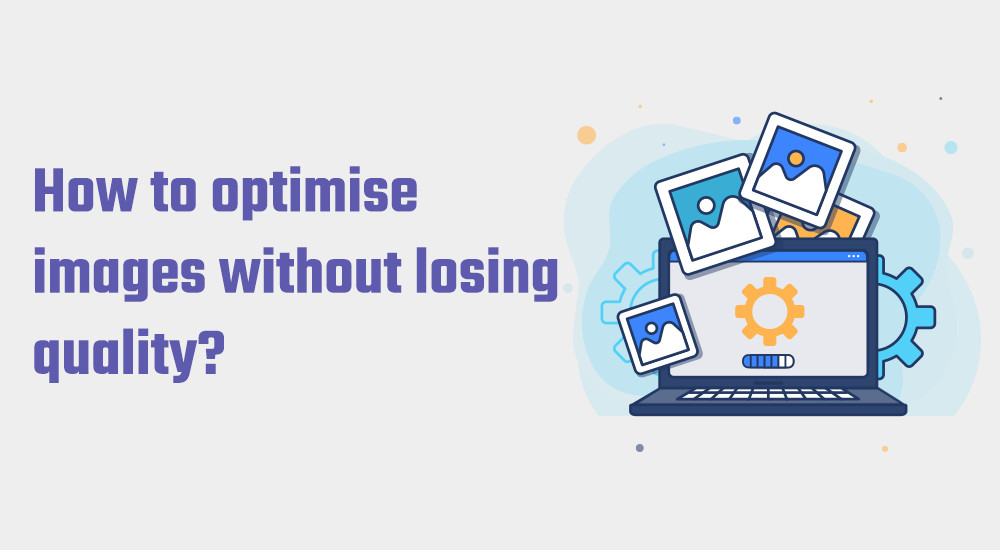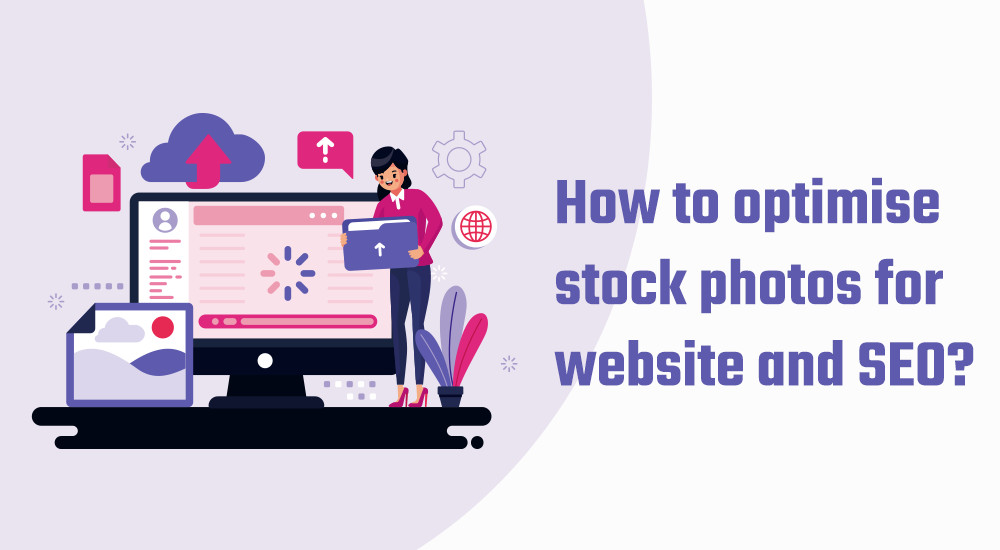Imagery has always been an indispensable part of a successful website. Integration of relevant images balanced with the content notion lays the prime groundwork for a quality website and SEO.
Optimising images are important to rank well. Even if you get stock images, it’s always good to optimise them for the best use on your website, blog or social media. You may have encountered the issue of Google My Business posts being rejected due to image quality or content issues.

Table of content:
- Importance of images & media
- Image optimisation without losing quality
- How to optimise stock photo?
- Stock photo SEO ranking
- How to name image file?
- Best image file extension
- Best image file size
- How to use ALT tag?
- eCommerce image optimisation
- Infographics
Importance of Images & Media for SEO
These days you can’t achieve the desired organic ranking without the use of proper image and media on your website.
They also play an important role to convey the message fast to users which keeps them engaged to read your content.
Inefficient usage of images and media would make your website look less interactive and fail to convey the right message to your audience, and make a poor first impression.
If you fail to create a strong impression with a catchy heading and effectual image or video in the head section of your website, you may experience higher bounce rates which will directly impact your SEO endeavours.

So it is crucial to optimise images for your website as well as SEO. We are the best SEO company in Melbourne and we will help you optimising your images and more with our team of highly experienced SEO professionals. Contact us today for more information.
Image optimisation is the process of resizing and compressing images in the correct format without compromising its quality. It improves the page loading speed, enhances user experience and engagement and ensures higher rankings in Google search results.
There are two ways of image optimisation:
- Image optimisation using a photo editor
- Making images SEO friendly
Both are equally important, and their joint implementation would help you achieve the best outcome.
In this post, you’ll learn how to optimise images for SEO by implementing best image optimisation practices in unison with the best website SEO considerations.
So let’s dive in.
How to optimise images without losing quality?
Raw images have a very high resolution and a bigger file size. So uploading them without proper optimisation would increase the page loading time. That is damaging to your website SEO as well as user engagement and will ultimately have a negative impact on your overall SEO campaign.

- Dimension: You should have a basic idea about the height and width of the image you may need for a specific part of your website.
- Resize Image: You can resize your image close to your requirement which will naturally make the image lighter in size.
- Export for web: When you export, you may not need 100% of quality you can keep around 85 to 90% to achieve the optimum quality.
You can use any photo editing software like Photoshop (paid product) or any open or free source like GIMP.
Note: If you may find photo editing software difficult to use then you can rely on online banner design tools like bannersnack.com.
How to optimise stock photos for website and SEO?
Most people tend to use stock photos for their websites while some use customised photographs through a professional photo-shoot; especially for their company products or as per other business requirements.
Although there is no better outcome than creating your own photographs, it can often be time-consuming and expensive. Hence a vast majority of websites rely on stock photos.

Some of the leading sites where you can obtain high-quality stock photos are Unsplash (free photos), Shutterstock (paid photos), PicJumbo, Foter and more.
Here are steps you can take to ensure you get the best outcome from stock images:
- For the web, you may not need to download or buy extra high-resolution images. Often stock photo providers charge more based on the resolution.
- You must optimise the image to reduce the dimension (height and width) based on your need and reduce the file size.
- Give a personal touch to the image by including your branding and appropriate text.
- Do not use the image file name as you may have downloaded like (shutter-sock-image123.jpg), use proper file naming.
- While uploading the optimised photo on your website, use the appropriate ALT tag.
How to make stock photo rank high?
In general, it’s not a good idea to use the images as it is downloaded from stock image sites. Always make sure to give a personal touch to your images by adding a compelling and persuasive message, or brand logo, or anything which makes your photos unique and beautiful.
You can also incorporate specific and personalised screenshots, pie charts, graphs, and more to enhance the genuineness of your content to a greater extent. That will make your content look more original and authentic and reduce the chances of your photographs getting copied easily.
Google would recognise your content with some level of uniqueness to provide much higher value with regards to SEO, and in turn, that would have a positive impact on your SEO campaign.
Note: Avoid integrating excessive text on the image. Add text on the image only if it’s essential and keep it very limited and specific to the subject.
How to name the image file with best SEO considerations?
Correct naming of an image file is a crucial aspect of image SEO.
Instead of keeping the file name as a random number or text, name it as the product or service you offer.
Use definite target keywords and relate the pages to see the best outcome of SEO.
Example: Let’s say you have a page related to carpet cleaning and your target city is Melbourne then you could keep your image file like carpet-cleaning-melbourne.jpg
Note: Always, separate the words by dash (-). Avoid using underscores (_) as a dash is more commonly accepted separator.
The best file extension for image SEO optimisation
JPEG, PNG and GIF are the most common image file formats accepted and rendered widely on the internet.
If you would like to maintain transparency in the image, then use a PNG or GIF format.
For more standard and complex images .jpg / .jpeg is the best file format.
Note: While saving the image, you may get the optimum size using .jpg or .png.
The right image file size (KB / MB) for website and SEO
When it comes to resizing, there is no perfect answer to what the best image size for SEO should be.
But ideally, the smaller, the better.
Smaller images around 100 KB and larger ones around 500 KB or less than 1 MB work just fine.
If your pages are heavily loaded with graphics then keeping all the images around 2 MB combined is ideal.
How to use the ALT tag for SEO?
Application of alt tags is another missed image SEO opportunity. You must have a proper alt tag for each image you upload on your website.
Alt tags are similar to the image file name where you include target keywords while writing the image description.
An alt tag is not visible to the general readers; however, it is essential for the crawlers and spiders as it provides them with the core functional information of the image.
And so it gets easy for the search engine to index your web page leading to higher chances of ranking.
That’s why it is essential for you to know how to use alt tags to scale up your conversions.
In the image upload window, you will find Alt Text or Alternative Text box. Just open the box and enter a short description of the image.
To achieve best results here are a few tips for writing SEO driven alt tags:
- Give a specific and relevant description of the image in the context of the website text.
- Make sure the alt text short and specific.
- Only use the target keywords if necessary or else use semantic keywords and other variation of long-tail keywords.
- Avoid keyword stuffing at all costs.
eCommerce image SEO optimisation
eCommerce sites have more images than standard sites, and hence you need to work on image optimisation regularly as you will upload more products and services from time to time.
The complexity of an online store is much higher than standard websites and it is worth considering to optimise the media right at the time of eCommerce website design or even prior based on SEO planning.
Thumbnail optimisation
A product listing page usually has several products featured in the form of images. And since we can’t afford to keep all of those in high resolution, it’s preferable to display the product images as thumbnails.
That is done by minimising and compressing the size of the image while maintaining it at optimum quality. The best way to minimise the size (physical size and dimension) is by using a dynamic image resizer. The programme would optimise the images to the lowest possible size and dimension without compromising their quality.
Apart from that, don’t forget to use alt tags for each product to improve your eCommerce SEO ranking.
Moreover, if you have limited products on your website, you can also take on manually optimising the images.
eCommerce product images optimisation
The product detail page usually consists of multiple images of the same product to showcase the different colours, angles, etc. for enhanced customer satisfaction.
So to maintain a fine resolution of these images, make sure not to upload raw product images.
Instead, edit them using photo editing software and follow the best image optimisation practices for website and SEO (as discussed on the earlier sections) and optimise your way to a booming eCommerce business.
Note: Reduce the image size to around 100 to 200 KB max.
Ecommerce SEO plays a great role in your online store business and image optimisation is a big part of it.
Infographics for SEO
Infographics and SEO undeniably go hand in hand.
Well optimised and easily skimmable infographics are a great source to quickly and clearly deliver messages, demonstrate ideas and provide specific solutions in a visually compelling manner.
On top of that, crafting shareable and link-worthy infographics would maximise the user engagement time in your website by decreasing the overall bounce rates. Which, in turn, proves to be a boon for your SEO and marketing campaigns.
Learn more about infographics SEO strategy to boost your SEO ranking.